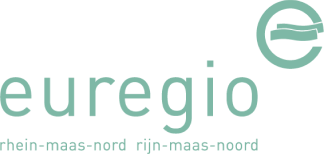The Interreg VI A
Emergency Drone project is realised by DNL-contact GmbH & Co. KG as lead partner
and nine other German and Dutch partners: Rhine-Waal University of Applied
Sciences, Fire and Rescue Academy Bocholt, RF-Frontend GmbH, GeSa mbH, DLRG,
Robor Electronics BV, Spectro-AG BV, Veiligheidsregio Twente and Space 53.
With a project
budget of 5.2 million euro, the project consortium will develop and test
innovative cross-border applications for the use of drones in the case of a
disaster. The project is valid for 4 years. These drones must be able to be deployed
effectively and quickly in an emergency case. Special flight operations
software is being developed for this purpose. In contrast to standard software,
it can be customised to the missions: The user selects a specific scenario and
all options and settings that are not required for this mission disappear in
the background. This makes operation user-friendly and clear and will
also make it easier for volunteers (volunteer fire brigades) to use drones, for
example.
The drones will
become lifesavers in a emergency case.
The collapse of
the communications infrastructure is often a problem during a emergency
situation. With the help of radio drones and radio transmission technology
(multi-hop transmission), an ad-hoc network for secure communication with
connection to the mobile and WiFi network will be set up within a very short
time.
An AI-based early
warning system will be integrated into a drone-in-a-box system for the
prevention and automated early detection of forest fires. The AI can
distinguish real flames from, for example, smoke plumes from field work or
barbecues. In view of increasing
forest fires due to climate change, this prevention tool is of great
importance.
A special process
is used to develop the interaction of several drones in drone swarms. The swarm
flies over large areas and generates and transmits 3D maps in real time.
The interaction
between a drone with an underwater camera, a remote-controlled boat with
sensors and divers is being developed to detect drowning people in water.
All of the above
developments are continuously tested and trained in practice.
The DLRG, the
Bocholt Fire and Rescue Academy and the Twente Fire Brigade will test the new
technologies on an ongoing basis so that practical experience can be directly
incorporated into the development. The district of Warendorf, the county of
Grafschaft Bentheim and the municipality of Enschede are associated partners in
the project.
Emergency Drone
Project information
Planned project costs
€ 5.209.498,48
Priority
A more innovative programme area
Project duration
01.10.2023
-
30.09.2027
Lead partner
DNL-contact GmbH & Co.KG
Project partners
Hochschule Rhein-Waal
RF-Frontend GmbH
Landkreis Grafschaft Bentheim
Gemeente Enschede
GeSa mbH
Feuerwehr- und Rettungsakademie Bocholt
DLRG
Robor Electronics B.V.
Veiligheidsregio Twente
Kreis Warendorf
Spectro-AG B.V.
Project financing
EFRE / EFRO
€ 2.107.233,48
Ministerie van Economische Zaken
€ 262.035,69
MWIKE NRW
€ 436.726,14
Provincie Overijssel
€ 174.690,47
DLRG
€ 30.506,10
DNL-contact GmbH & Co.KG
€ 60.032,70
Feuerwehr- und Rettungsakademie Bocholt
€ 96.185,60
GeSa mbH
€ 23.069,90
Hochschule Rhein-Waal
€ 293.713,56
RF-Frontend GmbH
€ 450.601,20
Robor Electronics B.V.
€ 682.490,34
Spectro-AG B.V.
€ 469.049,70
Veiligheidsregio Twente
€ 123.163,60
Do you have a project idea or a specific question about the Interreg program Germany-Netherlands?
We are happy to help you! We are also open to suggestions!
Socials
We in social media















